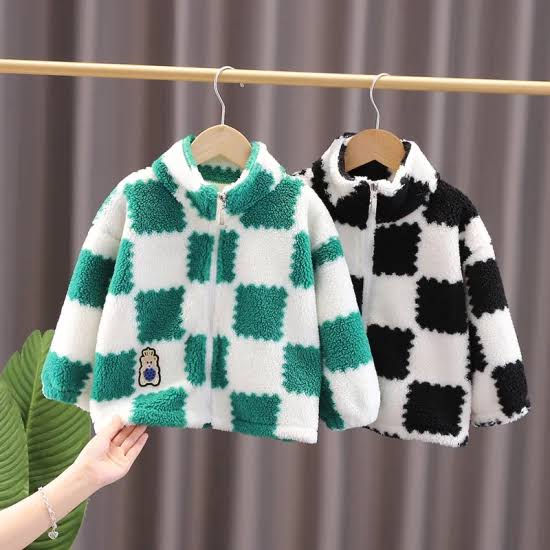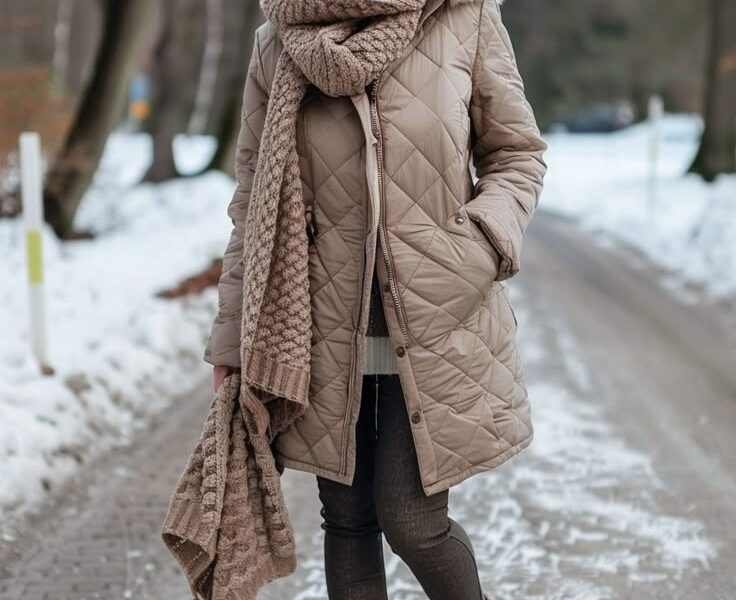When selecting jackets for children, fabric choice is one of the most important considerations. A jacket’s material determines not only its comfort but also its durability, weather resistance, and overall style. Unlike adult clothing, kids’ jackets must withstand rough play, frequent washing, and seasonal changes, making fabric selection even more critical. Parents often balance aesthetics with practicality, ensuring that the chosen material is both child-friendly and fashion-forward.
Natural fabrics like cotton and wool remain popular for their breathability and comfort. These materials are gentle on sensitive skin, making them ideal for younger children. Denim, another natural-based fabric, adds durability and style, making it perfect for casual wear. On the other hand, synthetic fabrics such as polyester and nylon dominate the market due to their lightweight properties, resistance to water, and affordability. These fabrics are particularly useful for outerwear designed for rain or active play. Fleece, also synthetic, has become a go-to choice for cozy, warm jackets.
With sustainability gaining momentum, eco-friendly fabrics are becoming more common in kids’ fashion. Recycled polyester, organic cotton, and bamboo-based textiles provide an environmentally conscious alternative without sacrificing comfort or style. Parents are increasingly drawn to these options, seeing them as investments in both their child’s comfort and the planet’s well-being.
Ultimately, fabric choices in kids’ jackets depend on the purpose of the garment. A winter coat, for instance, might require wool or fleece, while a rain jacket calls for nylon or polyester. The right fabric not only keeps kids warm and comfortable but also ensures the jacket remains fashionable and durable. By understanding the qualities of different materials, parents can make informed decisions that balance practicality, style, and sustainability.
Natural Fabrics (Cotton, Wool, Denim)
Natural fabrics are often the first choice for parents who prioritize comfort and skin-friendly materials in kids’ jackets. Cotton is particularly popular for lightweight jackets, especially during spring and autumn. It is soft, breathable, and hypoallergenic, making it safe for children with sensitive skin. Cotton jackets also allow for easy layering, pairing well with t-shirts or dresses. However, pure cotton is less suitable for harsh winter conditions since it doesn’t insulate as well as other fabrics.
Wool, on the other hand, is highly valued for warmth. Wool jackets or coats are perfect for colder months, providing insulation while remaining breathable. Wool also resists moisture to a certain degree, keeping kids comfortable in damp conditions. However, it requires careful maintenance, as wool can shrink or lose shape if not handled properly. Blended wool fabrics are often used in kids’ jackets to improve durability and reduce cost.
Denim is another natural option, popular for its ruggedness and style. A denim jacket is a wardrobe staple that works across multiple seasons. It is durable, long-lasting, and easy to style with casual outfits. Kids’ denim jackets often come with playful embellishments, patches, or embroidery, making them both fashionable and practical. However, denim does not offer much warmth or water resistance, so it’s better suited for transitional weather rather than extreme cold or rain.
Overall, natural fabrics are timeless choices for kids’ jackets. They prioritize comfort and durability while offering a stylish foundation. Parents who choose natural materials benefit from their breathability, classic appearance, and child-friendly qualities, although they may need to complement them with other fabrics for added functionality.
Synthetic Fabrics (Polyester, Nylon, Fleece)
Synthetic fabrics dominate the kids’ jacket market due to their versatility, affordability, and practical performance. Polyester is perhaps the most common synthetic material, used widely in jackets because of its durability and resistance to shrinking or wrinkling. It dries quickly, making it an excellent choice for active children who may get caught in the rain or play outdoors frequently. Polyester jackets are often lined or quilted for added insulation, making them suitable for both transitional and winter seasons.
Nylon is another popular synthetic fabric, known for being lightweight yet strong. It is commonly used in rain jackets, windbreakers, and sporty outerwear because of its water-repellent properties. Nylon jackets are easy to clean, long-lasting, and ideal for children who need practical outerwear for unpredictable weather. They are also often paired with zippers, hoods, and elastic cuffs, enhancing their functionality.
Fleece, made from synthetic fibers, has become a go-to material for cozy, warm jackets. It mimics the insulating properties of wool but is much lighter and easier to maintain. Fleece jackets are perfect for layering under heavier coats in winter or wearing alone in chilly but not freezing weather. They are also very soft, making them a favorite among kids for comfort. However, fleece is not windproof or waterproof, so it’s often combined with outer shells for added protection.
Overall, synthetic fabrics offer practicality that natural materials sometimes lack. They are easier to maintain, more affordable, and better suited for weather resistance. Parents often prefer synthetic jackets for everyday use since they balance style, durability, and ease of care. The versatility of polyester, nylon, and fleece ensures that kids stay both stylish and protected in all conditions.
Sustainable and Eco-Friendly Fabrics
As awareness of environmental issues grows, sustainable and eco-friendly fabrics are becoming more prominent in kids’ jacket fashion. Parents are increasingly conscious of the impact of fast fashion and seek materials that are kinder to the planet while remaining comfortable and durable for children. Eco-friendly fabrics include organic cotton, recycled polyester, hemp, and bamboo-based textiles, each offering unique benefits.
Organic cotton, grown without harmful chemicals, is softer and safer for children’s skin compared to conventional cotton. It reduces exposure to pesticides and promotes better farming practices. Jackets made from organic cotton are breathable, comfortable, and environmentally responsible.
Recycled polyester is another rising star in sustainable kids’ fashion. It is made from repurposed plastic bottles or waste materials, reducing landfill waste and lowering the need for virgin polyester production. Jackets crafted from recycled polyester retain the same durability and weather resistance as traditional polyester but with a significantly smaller environmental footprint.
Bamboo-based fabrics are also making their way into kids’ outerwear. Bamboo is a fast-growing, renewable resource that produces soft, breathable textiles with natural antibacterial properties. Jackets made with bamboo blends are lightweight and comfortable, making them ideal for children’s sensitive skin. Hemp, another sustainable option, is durable, long-lasting, and naturally resistant to pests, although less common in kids’ fashion.
The rise of eco-friendly fabrics reflects a broader shift toward ethical and sustainable fashion. Many brands now highlight transparency in their production processes, ensuring that kids’ jackets are not only stylish but also environmentally responsible. Parents choosing sustainable fabrics contribute to reducing environmental harm while teaching children the value of conscious consumer choices.


